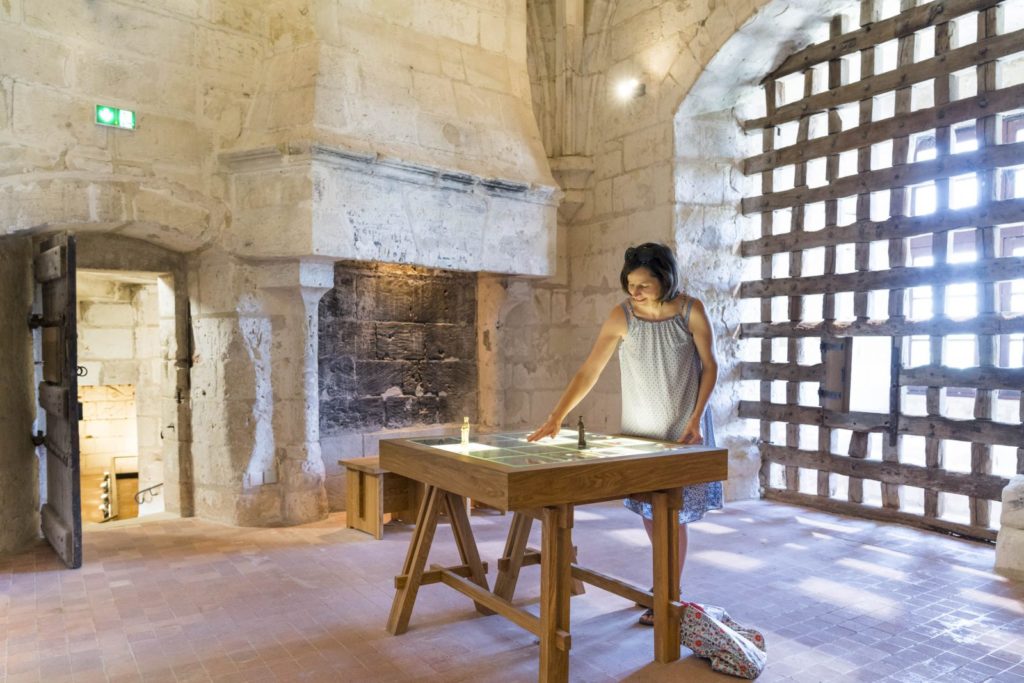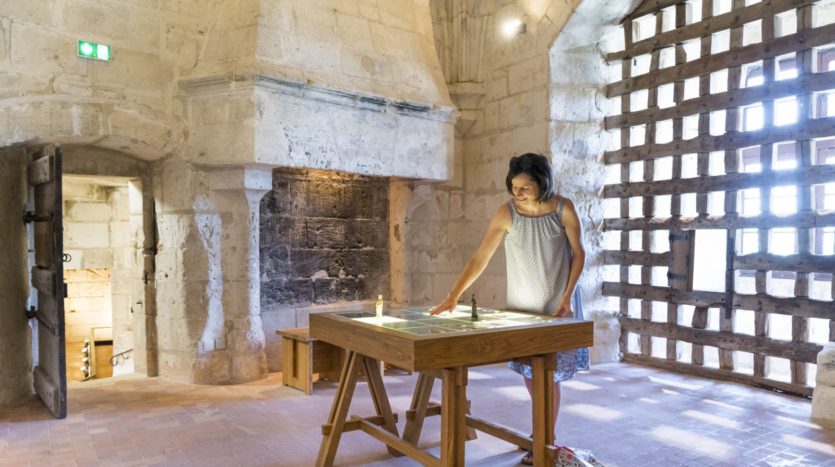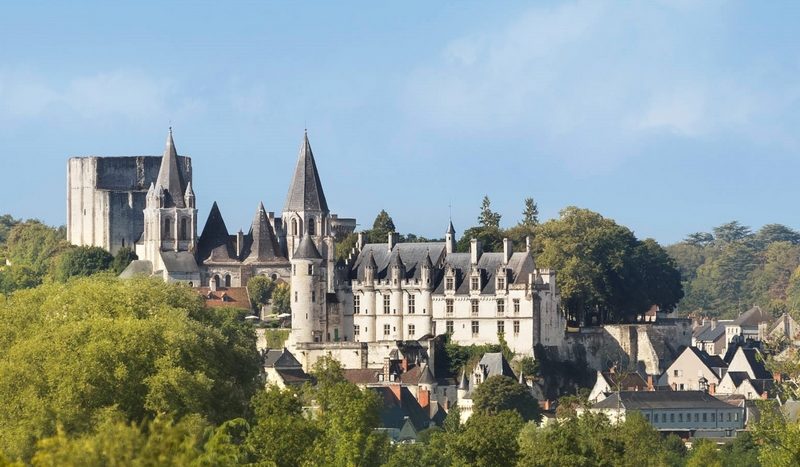The Royal City of Loches: From The Citadel to The Prison
The Royal City of Loches was founded in the heart of the Loire valley, some forty kilometres from Tours. This complex of heritage, classified as historical monuments since 1862, sits on top of a rocky outcrop overlooking the Indre. It has one of the best-preserved Romanesque-era dungeons that its host, the Departmental Council of Indre-et-Loire, has allowed tourists to enjoy since 1950. Follow the lead!
A warlike site in its early days
The first remains of stone fortifications on the site of the fortress of Loches date from the 10th century, while evidence attests to the presence of a castrum from the 5th century, a Roman fortified camp with a wooden keep.
The Anjou family got their hands on the lands of Loches, thanks to Louis le Bègue and good marriages, which in the first half of the 11th century enabled Foulque Nerra III, Count of Anjou, to create a square keep. The site was enriched by Henri II Plantagenêt, with walls and moats that survive to this day.
Via the succession of Philippe Auguste in 1193 by the judgement of Jean Sans Terre, the territory was conquered by Richard the Lionheart and then taken over by Philippe II of France in 1205 and annexed to the royal domain, thus giving it military peace for the protection of its walls.
A residence of kings then of prisoners

The fortress of Loches was cherished and frequented by Charles VII, King of France, from 1418 onwards. After Chinon, he made it the second royal fortress and he encountered Joan of Arc there after the victory in Orleans. His stays multiplied, particularly as Agnès Sorel, his favourite 20-year-old junior and original lady companion to Isabelle de Lorraine, Duchess of Anjou, frequented him.
The stronghold of Loches was regarded by other rulers. Thus, under Charles VIII and Louis XII, the royal residence expanded, notably with the oratory of Anne of Brittany, a wonder of the Gothic style. The dynasty of the Valois then abandoned the position.
The field of Loches was converted into a prison in the 16th century from a ducal residence then a royal castle, and retained this vocation until 1926. It was held there by Philippe de Commynes, Ludovico Sforza and Jean de Poitiers.
A diverse set enriched over time
The numerous vicissitudes faced by the fortified territory of Loches culminated in many buildings being constructed. The fortress grew between the tenth and the sixteenth centuries to the point that we know it today. The royal dwelling was therefore installed in the north, not far from what is known as the “small keep” 36 metres high and dominating the entire, opposite the main tower designed by Foulque Nerra.
In the 15th century, a Circular Tower was erected to accommodate the cutting-edge artillery equipment of the day. The old dungeon was unable to handle the weapons. Then came the Martelet, a tower that is not in height but well dug: four tiers reflecting shelter dungeons of 27 metres, including the one that housed (and saw the death) of the Duke of Milan, captured by Louis XII in 1500.
To the south, Henry II of England and Richard the Lionheart have the ramparts and the three towers that adorn them. Eventually, during the wars of faith, a casemate called “caponnière” was built to protect the ditches.
The Royal City of Loches now provides a tour rich in entertainment and immersion in past centuries, packed with echoes of history, conquered and frequented by great names of French and English royalty. Not to mention the appeasement that a well preserved mediaeval garden offers. Guaranteed change of scenery!



